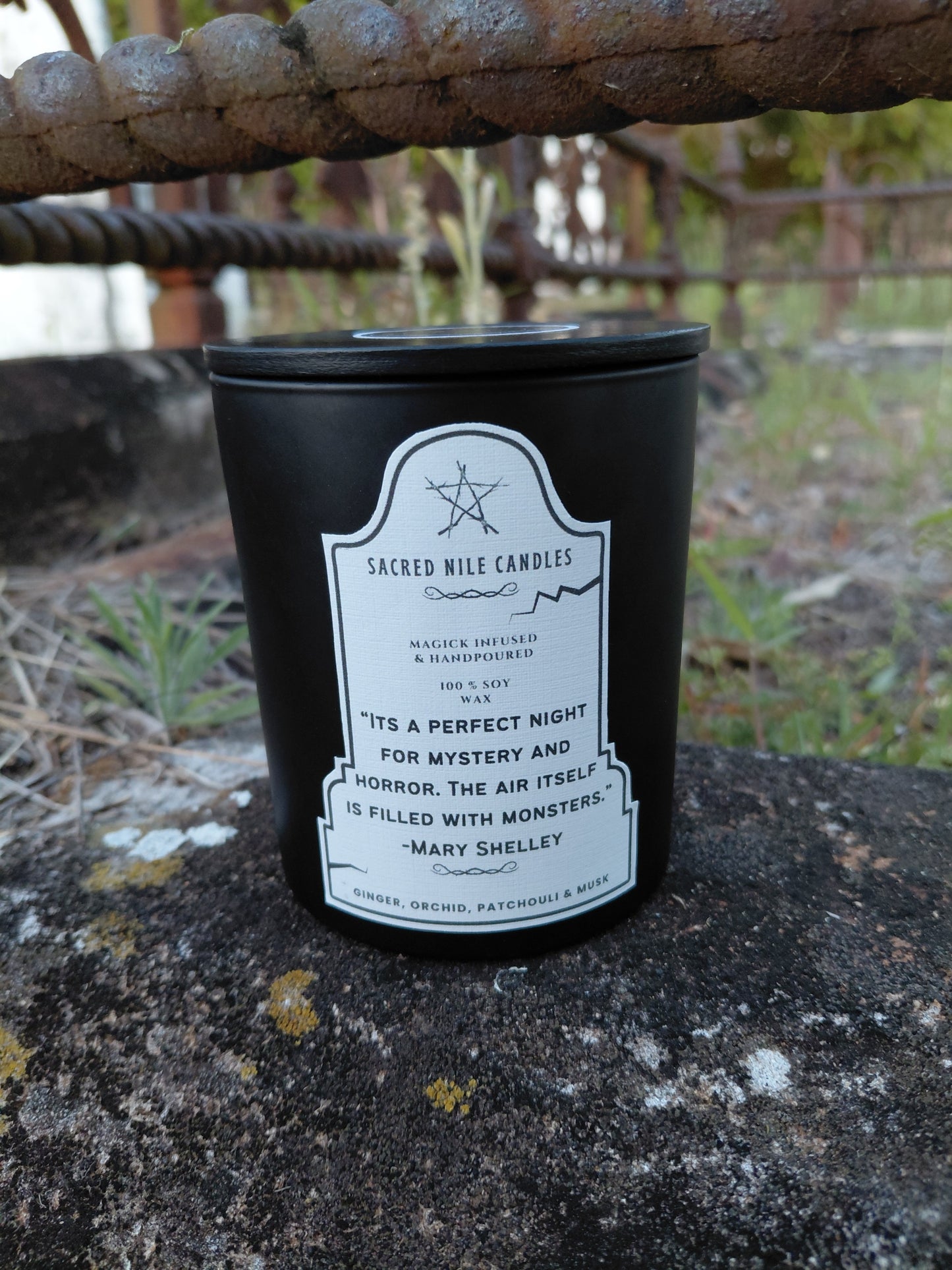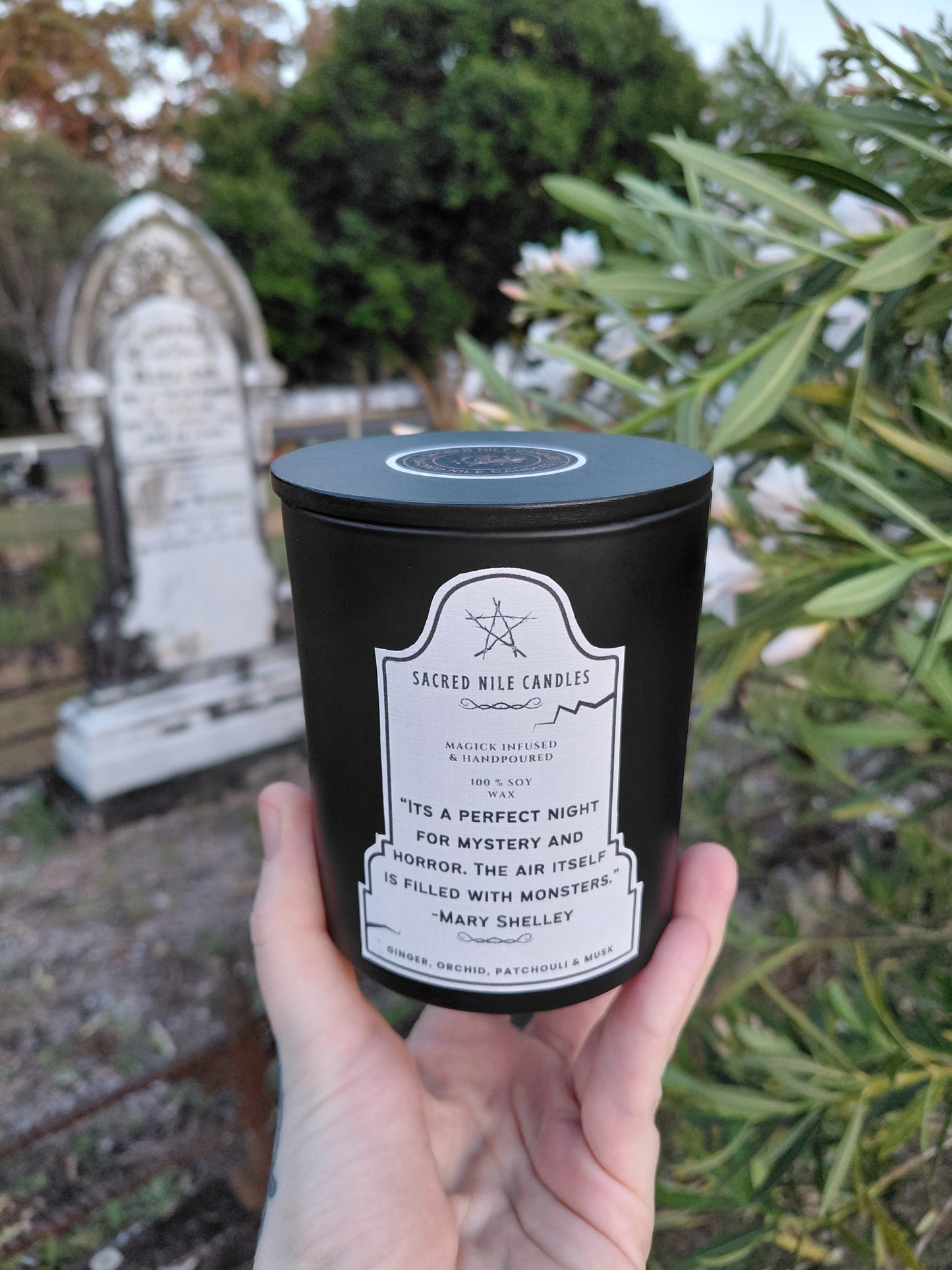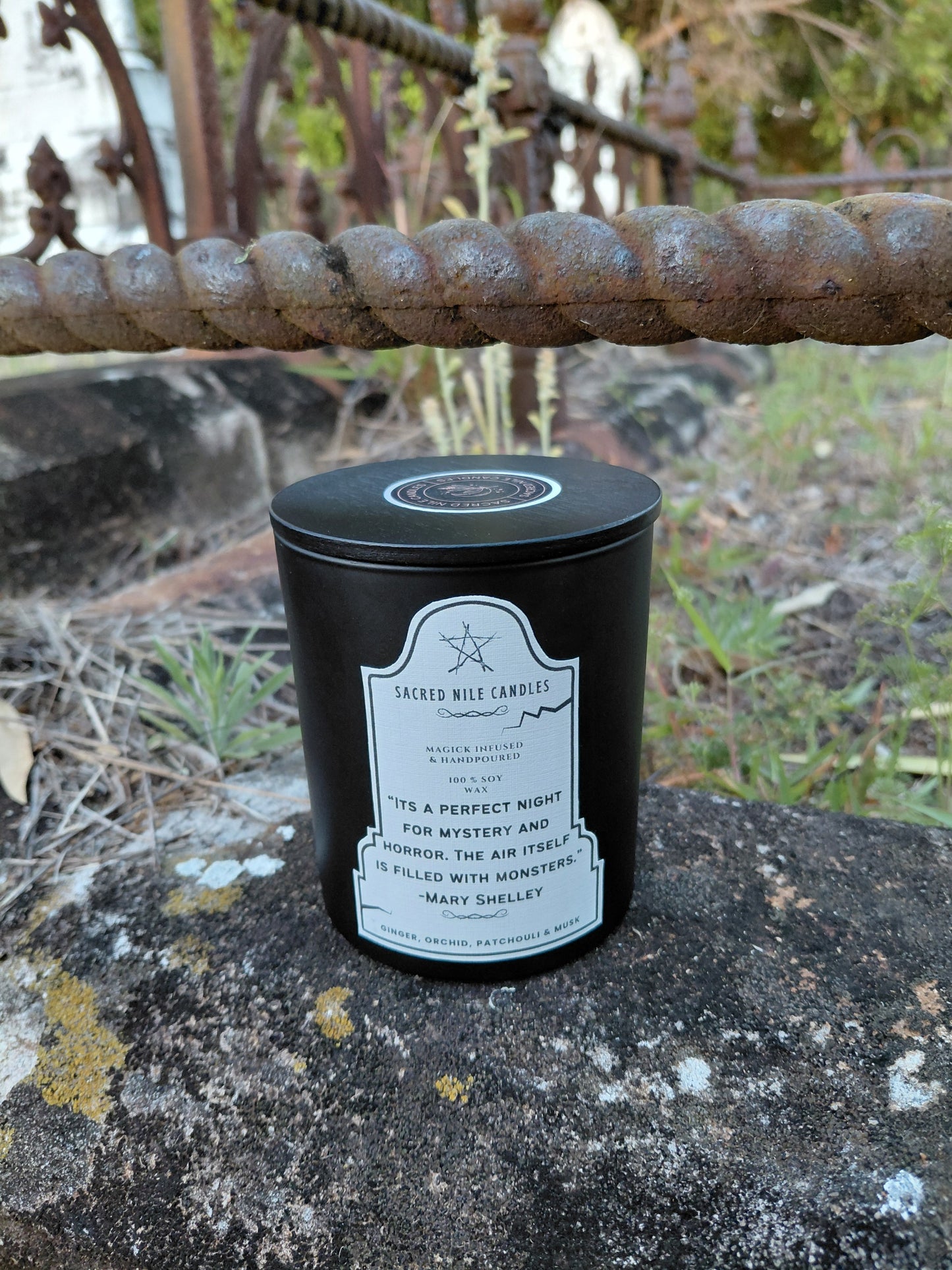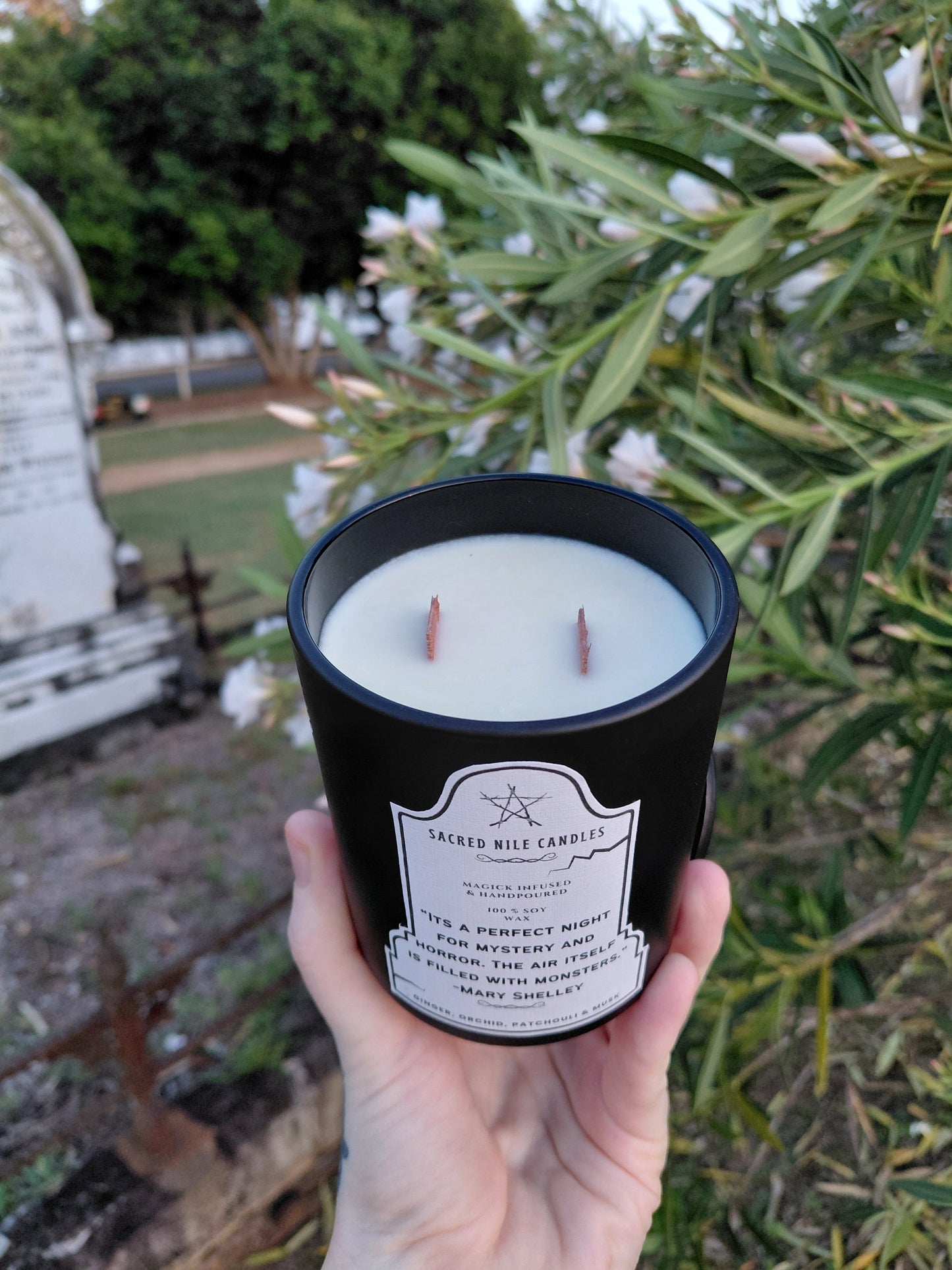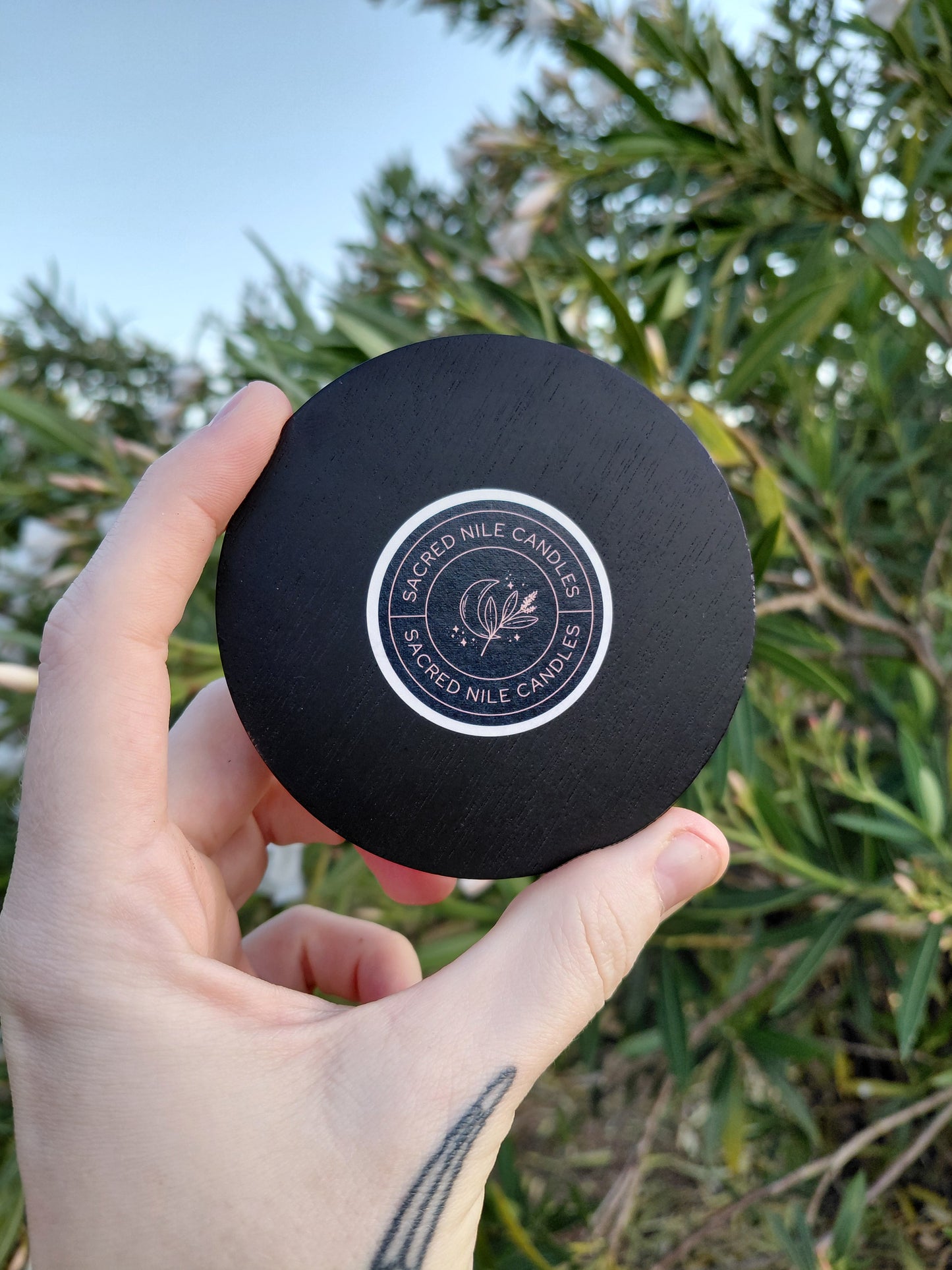Sacred Nile Candles
The Momento Mori Collection: Mary Shelley - Ginger, Orchid, Patchouli & Musk
The Momento Mori Collection: Mary Shelley - Ginger, Orchid, Patchouli & Musk
Couldn't load pickup availability
DESCRIPTION:
There will be food and drink and ghosts, and perhaps...a few murders.
This collection was inspired by the Gothmothers and Gothfathers of literature. Only one of each has been created and once it's gone - that's it! Each label was designed by me, taking into account what real tomb stones look like in way of engraving. Each label has been gently distressed to give it that aged-stone look.
We use high quality 100% soy wax which is quite difficult to use but ensures quality candles with an approx. 45 hours burning time. We have chosen wooden wicks for that authentic crackling sound and to ensure minimal smoke. Also, our glass jars are easy to clean and reuse once your candle has finished burning.
This collection comes with a thin, wooden lid painted black to keep your wax dust and dirt free inbetween burnings.
About the author/artist/poet...
Mary Shelley (1797–1851) was an English novelist whose most famous work, Frankenstein; or, The Modern Prometheus (1818), is often celebrated as the first real science fiction novel.
She was the daughter of two notable intellectuals: the philosopher William Godwin and the trailblazing feminist writer Mary Wollstonecraft. Sadly, her mother passed away shortly after her birth, but Mary grew up in a household full of books and forward-thinking ideas.
At just 18 years old, Mary wrote Frankenstein, which tells the story of Victor Frankenstein, a young scientist who brings a creature to life only to be filled with horror at what he's created. The novel touches on big themes like ambition, creation, responsibility, and the fine line between science and morality.
In 1816, during the so-called “Year Without a Summer,” Mary, her lover Percy Bysshe Shelley (whom she later married), and Lord Byron found themselves at Lake Geneva. Confined indoors by storms, Byron challenged everyone to write a ghost story—leading to the birth of Frankenstein.
Her inspiration also came from the scientific experiments of the time, like galvanism—the use of electricity to animate muscles in dead bodies. On a deeper level, her personal experiences with loss—her mother's early death and the later deaths of her children—made her especially sensitive to themes of life, death, and grief, which deeply influenced her writing.
